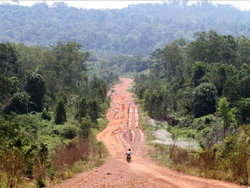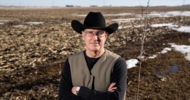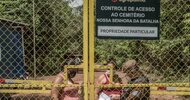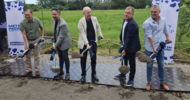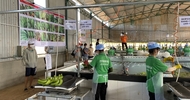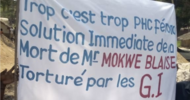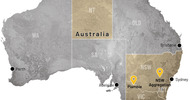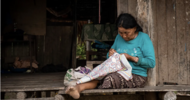Casinos, condos and sugar cane: How a Cambodian national park is being sold down the river
by James Fair
- Botum Sakor National Park in southern Cambodia has lost at least 30,000 hectares of forest over the past three decades.
- Decades of environmental degradation go back to the late 1990s when the Cambodian government began handing out economic land concessions for the development of commercial plantations and tourist infrastructure.
- NGOs in Cambodia are said to be unwilling to speak out against the destruction of Botum Sakor because they are afraid they will not be allowed to operate in the country if they do.
- The government says economic activity is vital to improve people’s livelihoods and reduce poverty.
Covering a vast peninsula that juts out into the Gulf of Thailand on Cambodia’s southern coast, Botum Sakor is one of the largest national parks in the country and known to be richly diverse in both fauna and flora.
It’s home to more than 500 bird and at least 44 mammal species, including Sunda pangolins, dholes (Cuon alpinus, a wild canid), Asian elephants (Elephas maximus) and pileated gibbons (Hylobates pileatus), all of which are classified as either Critically Endangered (Sunda pangolin) or Endangered in the IUCN Red List.
Over the past two decades, however, Botum Sakor has acquired a darker reputation for having one of the highest rates of deforestation in Cambodia, with those who are prepared to go on the record describing it as a “paper park” that is being effectively destroyed.
The park itself covers an expanse of just over 170,000 hectares (420,00 acres), but large areas have already been deforested. Satellite data from the University of Maryland (UMD) visualized on the forest monitoring platform Global Forest Watch (GFW) show that it lost 24,500 hectares of humid primary rainforest between 2002 and 2020. In other words, 24% of the park’s old growth forest was cleared over the past 18 years. Total tree cover loss (which adds in secondary forest loss) is even higher, equating to more than 32,000 hectares cleared.
Deforestation within the park appears to have peaked in 2012 with the loss of more than 3,000 hectares of primary forest that year alone, and then subsided to lower levels during most of the past decade. In 2019 and 2020, deforestation increased again, to 2,230 and 1,450 hectares lost respectively each year.
In an article in New Mandala published in 2015, Bandos Ros, a researcher affiliated with Hiroshima University, wrote that deforestation “accelerated in the period 2003 to 2013 when Cambodia experienced a surge in foreign direct investment.”
Since the late 1990s, the Cambodian government has granted at least nine private companies Economic Land Concessions (ELCs) within the park for commercial crop plantations such as acacia and sugar cane, ecotourism and general infrastructure developments. An estimated 70% of the park has been carved up in this way.
In 2008, Chinese-owned company Tianjin Union Development Group (UDG) took up a 99-year lease on 36,000 hectares of coastal land for the development of the Dara Sakor Seashore Resort at the southern end of the peninsula.
According to research published in the International Journal of Asia Pacific Studies in 2018, this concession covered 12 coastal communities and involved the relocation of 1,400 people some 20km inland. UDG had been authorized to develop tourist facilities such as casinos, condominiums and apartments, the paper said.
A 65-km (40-mile) four-lane highway has been carved through virgin forest in the park to the new resort. According to MCC Singapore, a Chinese-owned real estate and property development business, an international airport under construction will be finished this year, while “a 100,000-ton international container terminal, a cruise terminal, a 2,000-ton cargo terminal and a yacht terminal” are also planned.
But there are suspicions that Dara Sakor is not all that the Cambodian authorities claim. In 2020, Voice of America (VOA) Cambodia reported that the U.S. Treasury Department had imposed economic sanctions on UDG for seizing land and displacing families.
“[Former] US Secretary of State Mike Pompeo said there were ‘credible reports that Dara Sakor ‘could be used to host (Chinese) military assets’,” VOA said, a charge denied by UDG, which said Cambodia had a constitutional prohibition on foreign troops in its territory.
Campaigner Alex Gonzalez-Davidson told Mongabay in an interview that an activist from the environmental NGO he set up, Mother Nature Cambodia (MNC), visited Dara Sakor last year and reported it was like a ghost town. “There’s one casino,” he said. “There’s the road going down to it and a huge airport, but there are not enough tourists visiting and it’s only used for a few months of the year. It doesn’t make any sense.”
Gonzalez-Davidson, who is no longer permitted to live in Cambodia because of his campaigning work, said it’s suspected that the development is a facade for Chinese money-laundering “but no one really knows how it works.” Much of what is happening in Botum Sakor, he added, was parceling out land to the highest bidder.
“The biggest resource is land,” he said. “The most expensive timber such as rosewood has gone. You’d be lucky to find many trees of value there now.”
Abu Kibria and Alison Behie argued in a piece for the Asia & The Pacific Policy Society that the Cambodian government was failing to take into account the value of clean air and water, as well as carbon sequestration by trees and soil, by allowing this environmental degradation to take place. Research published in Ecosystem Services estimated that Cambodia would lose $130 million a year in economic benefits unless deforestation in another national park, Veun Sai-Siem Pang, was halted.
Elsewhere within Botum Sakor, at least 9,000 hectares has been granted to a consortium involving Cambodian senator Ly Yong Phat and companies from Thailand and Taiwan for sugar cane plantations.
As discussed in their 2013 report, Equitable Cambodia and Inclusive Development International found that an EU preferential trade scheme for developing countries had provided duty-free access to the European market and a guaranteed minimum price for sugar that was three times the world price. This had resulted in a “land-grabbing epidemic” that included “violent forced evictions” [of small-scale food producers and rural communities] and other human rights violations.
Multiple sources, including a report published by the York Centre for Asian Research in 2005 – Customs, Concessionaires and Conflict: Tracking Cambodia’s Forest Commodity Chains and Export Links with China – confirm that another major concession was given to a Cambodian-Chinese company called Green Rich, which was granted 18,000 hectares in the north of the park in 2003 for to grow oil palm, acacia and other commodity plantation crops. Satellite imagery suggests this area of the park has been almost totally cleared of natural forest.
There is one exception to this trail of environmental degradation. The JW-Concession is protected by the U.S.-based NGO Wildlife Alliance and forest rangers under the control of the Cambodian Ministry of Environment. Located in a mosaic of lowland forest and grassland clearings and covering just over 18,000 hectares – about 10% of the park in total – the concession appears to be the only properly protected part of the park.
Wildlife Alliance has helped set up an ecotourism initiative, Cardamom Tented Camp, and says hunting and illegal logging have been dramatically reduced since forest rangers began patrolling the concession in 2013.
“A high density of law enforcement staff within the concession (roughly 8 rangers per 100-km2) as a result of higher levels of conservation investment appears to have reduced levels of illegal poaching, particularly snaring, in comparison with adjacent protected areas,” states a letter in Animal Conservation written by Wildlife Alliance’s science director Thomas Gray in 2019.
But many conservationists say the Wildlife Alliance concession is just papering over the cracks. “The coastline has been sold to the Chinese, a key mafia figure of Koh Kong province grabbed lots of land there for several dodgy projects, there’s a pulpwood planation felling mangrove areas and the Chinese [are] building a monster airport for ‘ecotourism’,” said Marcus Hardtke, an environmentalist who has worked in Cambodia since 1996, in an email. “Wildlife Alliance selected a tiny spot to run a localized ecotourism project, but [the park as it is today] has very little to do with the original IUCN concept of ‘from mountain to the sea’ ecosystem representation.”
A conservationist who has worked in Cambodia for several decades, and who would only speak to Mongabay on condition of anonymity, estimated that only about 40% of the park remains untouched. “It is hard to imagine there being much left, apart from the Wildlife Alliance concession, a decade from now,” the source added. “All the way along the road that leads down to the Chinese development is being trashed.”
The conservationist said the Green Rich concession had been taken out of the park and handed over to the provincial authorities who are rehousing people there. “The problem is they’ve given them really poor land and it’s useless for agriculture,” they continued. “I’ve seen this before, and they will be hunting wildlife. They’re not going to grow anything for a year so they’ll be putting snares everywhere.”
According to a number of sources, Green Rich – also known as Green Elite – is a “front company” for Asia Pulp & Paper (APP). Mongabay contacted APP to find out more about the concession in Botum Sakor but did not receive a response.
Asked to comment on the issues raised in this article, Neth Pheaktra, spokesperson to Cambodia’s Ministry of Environment, said the government had to find investors to increase employment opportunities, to reduce poverty and improve livelihoods.
“The Government pays high attention to environmental protection and biodiversity conservation in Botum Sakor while the Environment Ministry is working to designate the protected area zoning and management planning of the park for effective protection of natural resources and conservation and also to provide exclusive rights for local communities for sustainable use of resources within the park,” he added.
Mongabay contacted numerous NGOs that operate in Cambodia, including Wildlife Alliance, Fauna & Flora International and WWF-Cambodia, to ask them about deforestation within Botum Sakor but no one from any of these organizations was prepared to be interviewed.
Mother Nature Cambodia’s Gonzalez-Davidson said he wasn’t surprised. “None of them want to rock the boat,” he said. “We rocked the boat, and the regime has used us as a message [by not allowing him back into the country]. “These NGOs would never say anything bad, which is terrible, because the extent of the deforestation is so vast.”


